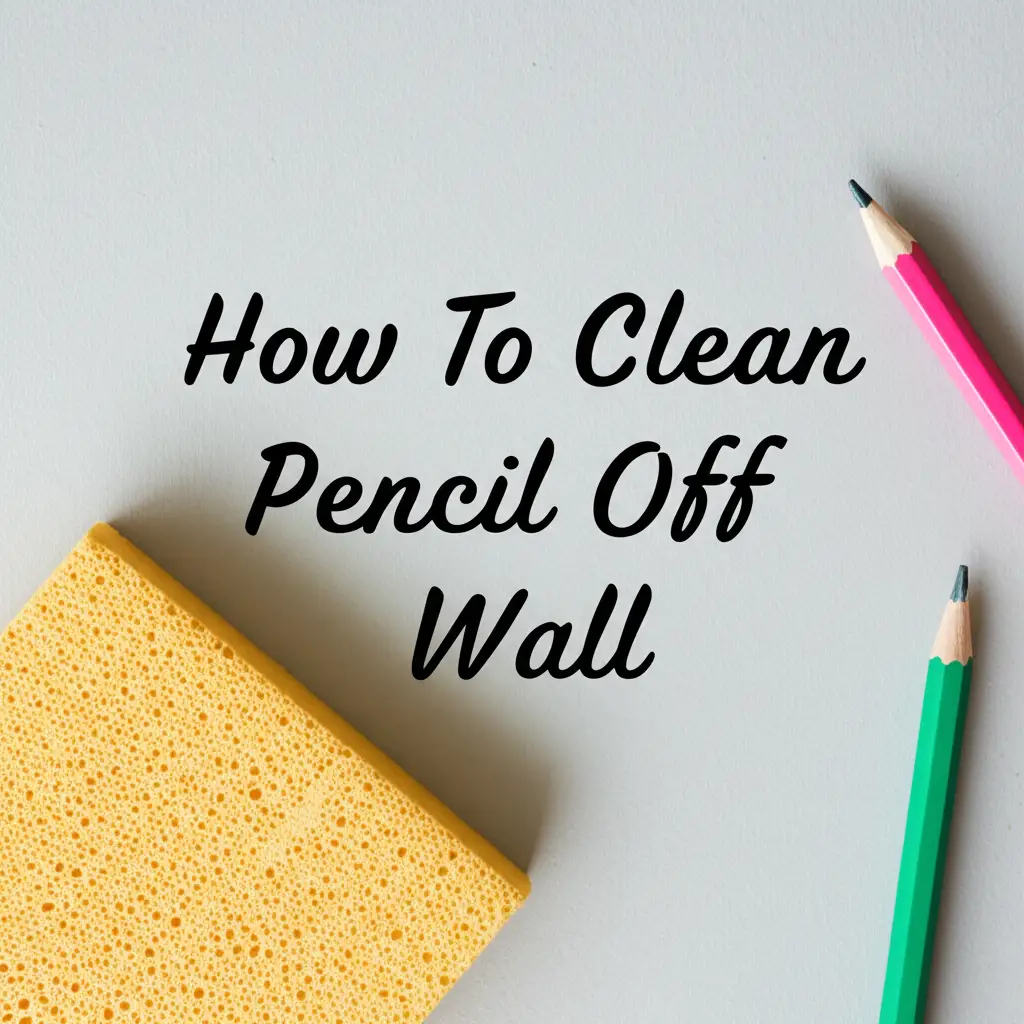· Home Cleaning · 16 min read
How To Clean Bentgo Lunch Bag

How To Clean Your Bentgo Lunch Bag for Lasting Freshness
Your Bentgo lunch bag sees a lot of action every day. It carries delicious meals, snacks, and drinks, making your daily life easier. However, frequent use means it can accumulate crumbs, spills, and even unwelcome odors. Keeping your lunch bag clean is not just about appearances; it is about maintaining hygiene and extending the life of your essential item.
A clean lunch bag prevents bacterial growth and keeps your food safe. Nobody wants a smelly or stained bag, especially when it holds your next meal. I know I certainly do not! This guide will show you exactly how to clean your Bentgo lunch bag, covering everything from quick daily wipes to deep cleaning methods. We will tackle tough stains, eliminate lingering smells, and provide tips for long-term care.
Takeaway
- Regular Cleaning: Wipe down your Bentgo lunch bag daily to prevent food buildup.
- Deep Clean: Hand wash your bag with mild soap and water for thorough cleanliness.
- Stain Treatment: Use gentle cleaners like baking soda paste or diluted white vinegar for spills.
- Odor Elimination: Place an open container of baking soda inside overnight to absorb smells.
- Thorough Drying: Always air dry your Bentgo bag completely to prevent mold and mildew.
Your Bentgo lunch bag should be cleaned by hand using a mild soap, warm water, and a soft cloth or sponge. Wipe both the interior and exterior surfaces thoroughly, paying attention to seams and corners. Rinse with a damp cloth, then air dry completely upside down to prevent moisture from trapping. This process removes food residues, eliminates odors, and keeps your bag hygienic.
Preparing Your Bentgo Lunch Bag for Cleaning
Before you begin the cleaning process, proper preparation makes a big difference. Taking a few moments to get your Bentgo lunch bag ready ensures a more effective and easier clean. This step helps you tackle dirt and spills efficiently. I always start with these simple preparations.
First, empty your lunch bag completely. Remove all containers, utensils, napkins, and any forgotten items. Check every pocket and compartment, including the smaller ones on the sides or front. You would be surprised what can get tucked away in there.
Next, turn the bag upside down and shake out any loose crumbs or debris. You can also use a small brush or a handheld vacuum cleaner to get rid of the smaller bits. This physical removal of large particles prevents them from becoming wet and sticky during washing. It also saves you effort later on.
Inspect the bag for any specific areas that need extra attention. Look for noticeable spills, food residues, or dark spots that might indicate mold. Knowing where the problem areas are helps you focus your cleaning efforts. This initial assessment guides your approach for the rest of the cleaning process.
Finally, gather your cleaning supplies. You will need a mild dish soap, warm water, a soft cloth or sponge, and possibly a small brush for stubborn spots. Having everything ready before you start streamlines the entire cleaning routine. This preparation ensures a smooth and effective clean for your Bentgo lunch bag.
Daily Wipes and Spot Cleaning for Your Bentgo Bag
Regular daily cleaning prevents small messes from becoming big problems. A quick wipe down after each use keeps your Bentgo lunch bag fresh and hygienic. This routine is simple and takes very little time. It helps maintain your bag’s appearance and cleanliness between deep cleans.
After you unpack your lunch, take a damp cloth and wipe the inside of the bag. Use a clean, soft cloth moistened with warm water. This removes any condensation, stray crumbs, or light food residue from the day’s use. It is a good habit to get into.
For minor spills or smudges on the exterior, perform spot cleaning immediately. A small spill of coffee or a sticky finger mark can be easily wiped away. Dip a corner of your cloth in a tiny bit of mild dish soap and gently rub the affected area. Then, use a clean, damp cloth to wipe away the soap residue.
Always ensure you do not oversaturate the fabric. Too much water can soak into the insulation, making it harder to dry and potentially leading to mildew. The goal here is quick and targeted cleaning. You want to address the mess without getting the bag overly wet.
Spot cleaning extends to the zippers and seams. Food particles can get trapped in these areas, causing stickiness or odors. Use a damp cotton swab or a small brush to clean along the zipper teeth and stitching lines. This small step makes a big difference in the overall cleanliness and functionality of your bag. Regular attention keeps your Bentgo bag ready for its next adventure.
Deep Cleaning Your Bentgo Lunch Bag: Hand Washing Method
Sometimes, a simple wipe is not enough. For a thorough clean, hand washing your Bentgo lunch bag is the best approach. This method allows you to clean all surfaces effectively and eliminate any lingering odors or unseen grime. It is a gentle yet powerful way to restore your bag’s freshness.
Start by filling a sink or a basin with lukewarm water. Add a small amount of mild dish soap. I prefer a gentle, unscented soap to avoid leaving any lingering chemical smells in the bag. Avoid harsh detergents or bleach, as these can damage the fabric and insulation of your Bentgo bag.
Submerge your Bentgo lunch bag in the soapy water. Use a soft sponge or a clean cloth to gently scrub both the interior and exterior surfaces. Pay close attention to seams, corners, and any areas where food might have accumulated. Work the soap into the fabric, but do not aggressively scrub, as this could damage the material. For similar fabric care tips, you might find information on how to clean an inside Louis Vuitton bag helpful for understanding gentle cleaning methods.
If your bag has a removable liner, take it out and wash it separately. Often, these liners are the part that gets the dirtiest. Washing them apart ensures thorough cleaning for both components. For a general guide on how to clean different types of bags, tips for how to clean a Marc Jacobs tote bag can offer broader insights into bag care.
Once you have scrubbed all surfaces, drain the soapy water from the sink. Refill the sink with clean, lukewarm water. Rinse the bag thoroughly by submerging it and gently squeezing out the soapy water. Repeat this rinsing process several times until no soap residue remains. Make sure all suds are gone, as soap left behind can attract dirt and cause stiffness.
After rinsing, gently press out as much excess water as possible. Do not wring or twist the bag, as this can damage its shape or insulation. A gentle squeeze is enough. This prepares the bag for the drying process, which is a crucial step to prevent mold and odors.
Tackling Stubborn Stains in Your Bentgo Lunch Bag
Stubborn stains are an inevitable part of using a lunch bag. Whether it is a leaky yogurt, a spilled sauce, or a smudge of chocolate, these marks can be frustrating. Do not worry; with the right approach, you can effectively remove most common stains from your Bentgo lunch bag. Patience and gentle products are key here.
For fresh stains, blot the area immediately with a clean cloth. Do not rub, as this can spread the stain and push it deeper into the fabric fibers. Blotting lifts the spill from the surface. This first step is crucial for minimizing the stain’s impact.
For greasy stains, such as oil or butter, sprinkle a small amount of cornstarch or baking soda directly onto the stain. Let it sit for about 15-30 minutes. This powder will absorb the grease. After the waiting period, brush off the powder. Then, proceed with a gentle cleaning solution. This method often works wonders on fresh grease marks.
For food-based stains like fruit juice, sauce, or coffee, mix a small amount of mild dish soap with water to create a gentle solution. Dip a clean cloth into this solution and gently dab the stain. Work from the outside of the stain inwards to prevent it from spreading. You can also use a soft-bristled brush, like an old toothbrush, to lightly scrub the area. After applying the solution, use a separate damp cloth with clean water to rinse the area.
Another effective stain remover is a diluted white vinegar solution. Mix equal parts white vinegar and water. Apply this solution to the stain with a cloth. Vinegar is excellent for cutting through many types of food residues and can help neutralize odors too. Let it sit for a few minutes, then blot dry and rinse with clean water. Vinegar is also a great tool if you are facing mold problems, as detailed in guides like how to clean mold with vinegar or how to clean mold on clothes.
For tougher, set-in stains, you might need to repeat the process. Apply the chosen solution, let it sit for a bit longer, and gently scrub again. Always test any cleaning solution on an inconspicuous area first to ensure it does not cause discoloration or damage to your Bentgo lunch bag. After successfully treating the stain, ensure the area is completely dry to prevent new issues.
Eliminating Odors from Your Bentgo Lunch Bag
Lingering odors can be one of the most persistent problems with lunch bags. Spilled milk, forgotten food, or just general use can leave behind unpleasant smells. A smelly Bentgo lunch bag is not only off-putting but also suggests that bacteria might be present. Luckily, there are several effective ways to neutralize and eliminate these odors.
First, ensure the bag is thoroughly cleaned from any food residue. Odors often come from microscopic food particles left behind. Follow the deep cleaning steps mentioned earlier, paying extra attention to scrubbing all surfaces. Sometimes, a good wash is all it takes to remove the source of the smell.
Baking soda is a powerful natural deodorizer. After cleaning and drying your Bentgo lunch bag, place an open container or a small bowl of baking soda inside it. Close the bag and let it sit overnight, or for a few days if the odor is particularly strong. The baking soda will absorb the unpleasant smells. This method works well for many types of bag odors.
Another effective odor eliminator is activated charcoal. Similar to baking soda, you can place a few pieces of activated charcoal in a breathable pouch inside the bag. Activated charcoal is highly porous and excels at trapping odor molecules. Leave it in for 24-48 hours. This is a great option for stubborn smells that persist.
White vinegar can also help neutralize strong odors. After cleaning, you can lightly mist the inside of the bag with a diluted white vinegar solution (equal parts vinegar and water). Allow it to air dry completely. The vinegar smell will dissipate as it dries, taking the bad odors with it. Remember that vinegar is also a useful agent if you ever need to address mold issues, as explored in resources like how to clean mold under sink or how to clean mold in shower.
Lastly, air circulation is key. Once your bag is clean and treated for odors, leave it unzipped and open to air out. Sunlight can also be beneficial, as UV rays have sanitizing properties. Place the bag in a sunny, well-ventilated area for a few hours. This fresh air circulation helps dissipate any remaining smells and keeps your Bentgo lunch bag smelling clean and fresh.
Drying and Maintaining Your Bentgo Lunch Bag for Longevity
Proper drying is a critical step in cleaning your Bentgo lunch bag. Skipping or rushing this part can lead to bigger problems like mold, mildew, and lingering musty smells. Effective drying ensures your bag remains fresh, hygienic, and ready for its next use. It also plays a significant role in extending the life of your bag.
After washing your Bentgo lunch bag, gently press out any excess water. Avoid wringing or twisting, as this can damage the insulation or fabric. You want to remove as much moisture as possible without stressing the material. A soft towel can be used to blot the interior and exterior to absorb surface water.
The best way to dry your Bentgo lunch bag is by air drying. Find a well-ventilated area, preferably with good air circulation. Open all zippers and compartments completely to allow air to flow freely inside the bag. You can prop the bag open with a small towel or stand it upside down to encourage airflow. This helps prevent moisture from getting trapped in creases or corners.
Do not use a machine dryer or direct high heat to dry your Bentgo bag. High heat can damage the insulating materials and outer fabric, causing them to warp or degrade. Air drying, even if it takes a bit longer, is much safer for the bag’s integrity. Patience is a virtue when it comes to drying.
Allow ample time for the bag to dry completely. Depending on humidity levels and air circulation, this could take several hours or even overnight. Before storing your Bentgo bag, feel all areas, especially the seams and corners, to ensure they are bone dry. Any residual moisture is an invitation for mold and mildew to grow.
Once completely dry, store your Bentgo lunch bag in a cool, dry place with the zippers slightly open. This allows for continued air circulation and prevents any musty odors from developing. Proper drying and storage are simple habits that make a significant difference in keeping your Bentgo bag in excellent condition for years to come.
Preventing Common Issues with Your Bentgo Lunch Bag
Proactive measures can save you a lot of cleaning effort and extend the life of your Bentgo lunch bag. Preventing issues like mold, mildew, and persistent odors is easier than treating them. A little foresight goes a long way in keeping your bag pristine. I have learned that prevention is key to a hassle-free experience.
Always empty your Bentgo lunch bag as soon as you get home. Do not let food containers, crumbs, or uneaten snacks sit inside overnight. Food residue is the primary cause of odors and attracts bacteria and mold. Make it a routine to empty and wipe the bag down after every use. This quick step is perhaps the most important preventive measure you can take.
Wipe down the interior of your bag with a damp cloth daily. Even if there were no visible spills, condensation from cold items can leave moisture. This moisture, combined with any microscopic food particles, creates a perfect environment for mold growth. A quick wipe ensures all surfaces are clean and dry.
Consider using an insulated liner or reusable containers within your Bentgo bag. Many Bentgo products already come with excellent containers, but if you’re packing loose items, an extra barrier can contain spills. These liners are often easier to clean separately than the entire bag. They provide an additional layer of protection against direct contact with the bag’s fabric.
Ensure your Bentgo lunch bag is completely dry before storing it. As discussed, moisture is the number one enemy when it comes to mold and mildew. After washing, or even after a daily wipe, leave the bag unzipped and open in a well-ventilated area until it is thoroughly dry. Never store a damp bag in a closed locker, cupboard, or drawer.
Finally, periodically air out your Bentgo lunch bag. Even if it seems clean, allowing it to breathe in fresh air can prevent stale smells. You can place it near an open window or outside on a dry, sunny day for a few hours. This simple practice keeps the bag smelling fresh and discourages any potential moisture buildup from condensation. By following these preventive tips, your Bentgo lunch bag will stay cleaner and last longer.
FAQ Section
Can you put a Bentgo lunch bag in the washing machine?
No, it is generally not recommended to put a Bentgo lunch bag in the washing machine. Machine washing can damage the bag’s insulation, shape, and fabric materials. The rigorous cycles can also cause the bag to warp or tear. Hand washing with mild soap and water is the safest and most effective method to clean your Bentgo lunch bag.
How do you get mold out of a Bentgo lunch bag?
To remove mold, first, empty the bag and shake out debris. Then, wipe the affected area with a cloth dampened with a solution of equal parts white vinegar and water. For stubborn mold, you can use a paste of baking soda and a small amount of water. Apply the paste, let it sit, then scrub gently. Always rinse thoroughly with clean water and air dry completely in a well-ventilated area to prevent recurrence.
How often should I clean my Bentgo lunch bag?
You should wipe down the interior of your Bentgo lunch bag daily after each use to remove crumbs and condensation. A deep clean, including hand washing, should be done weekly if used regularly. If spills or strong odors occur, perform a deep clean immediately. Regular cleaning prevents buildup, odors, and bacterial growth, keeping your bag hygienic.
What cleaning products are safe for Bentgo bags?
Mild dish soap, such as liquid hand soap or dishwashing liquid, mixed with lukewarm water is safe for cleaning Bentgo bags. Natural alternatives like white vinegar and baking soda are also effective for stain removal and odor elimination. Avoid harsh chemicals, bleach, abrasive cleaners, or strong detergents, as these can damage the bag’s fabric, insulation, or color.
How do I remove food smells from my Bentgo bag?
After cleaning any food residue, use natural deodorizers to eliminate lingering smells. Place an open container of baking soda or activated charcoal inside the bag and zip it closed overnight or for a few days. You can also lightly mist the interior with a diluted white vinegar solution and let it air dry completely. Ensuring the bag is fully dry and aired out is crucial for odor removal.
Conclusion
Keeping your Bentgo lunch bag clean is a simple yet vital task. It ensures your bag remains a reliable and hygienic companion for your daily meals. We have explored the best practices for how to clean your Bentgo lunch bag, from quick daily wipes to thorough hand washing. By following these steps, you can effectively tackle spills, eliminate odors, and prevent common issues like mold.
Regular maintenance not only keeps your bag looking good but also safeguards your health by preventing bacterial growth. A fresh, clean lunch bag makes packing and carrying your meals a much more pleasant experience. Embrace these cleaning habits, and your Bentgo lunch bag will continue to serve you well, day after day. A little care goes a long way in preserving your investment and promoting a cleaner lifestyle.
- Bentgo cleaning
- lunch bag hygiene
- stain removal




